Red-tailed Green Rat snake
- December 17, 2023
- 0 comment
The Red-tailed Green Rat snake, scientifically known as Gonyosoma oxycephalum, is a striking and captivating serpent native to Southeast Asia. Its name aptly describes its vibrant appearance, with a predominantly green body and a distinctively red tail. This species belongs to the Colubridae family and is commonly found in regions such as Thailand, Indonesia, Malaysia, and surrounding areas.
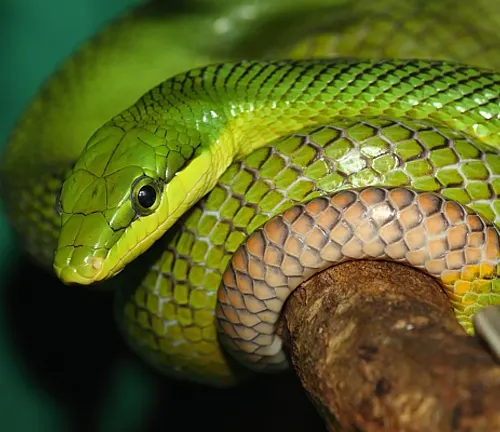

The Red-tailed Green Ratsnake is arboreal by nature, often inhabiting forested areas, where it skillfully maneuvers through trees and dense vegetation. With a slender and elongated body, it can reach lengths of up to six feet. Known for its non-venomous nature, this snakes primarily relies on constriction to subdue its prey, which typically consists of small mammals, birds, and sometimes lizards. Enthusiasts and herpetologists are drawn to this snake not only for its striking coloration but also for its calm temperament, making it a popular choice among snake keepers.
As a diurnal species, it is active during the day, allowing for easier observation of its behaviours and interactions. Despite its beauty, the Red-tailed Green Rat snake faces threats in the wild, including habitat loss and illegal pet trade, emphasising the importance of conservation efforts to ensure the survival of this remarkable reptile.
| Attribute | Description |
|---|---|
| Scientific Name | Gonyosoma oxycephalum |
| Common Name | Red-tailed Green Ratsnake |
| Family | Colubridae |
| Native Region | Southeast Asia (Thailand, Indonesia, Malaysia) |
| Habitat | Arboreal, found in forests and dense vegetation |
| Coloration | Predominantly green with a red tail |
| Size | Up to six feet in length |
| Feeding Habits | Carnivorous, preys on small mammals, birds, and occasionally lizards |
| Venomous | Non-venomous, relies on constriction for prey subduing |
| Temperament | Generally calm and docile, popular as a pet among snake keepers |
| Activity | Diurnal (active during the day) |
| Threats | Habitat loss, illegal pet trade |
| Conservation Status | Faces threats, conservation efforts are crucial for its survival |
Venomous or Not Venomous?
Dispelling the common misconceptions surrounding the Red-tailed Green Ratsnake, it is important to note that this species is non-venomous. Instead of relying on venom to subdue its prey, it employs the method of constriction. This characteristic, along with its calm temperament, positions the snake as an ideal choice for those fascinated by these creatures and seeking a non-venomous companion in the world of snake keeping.
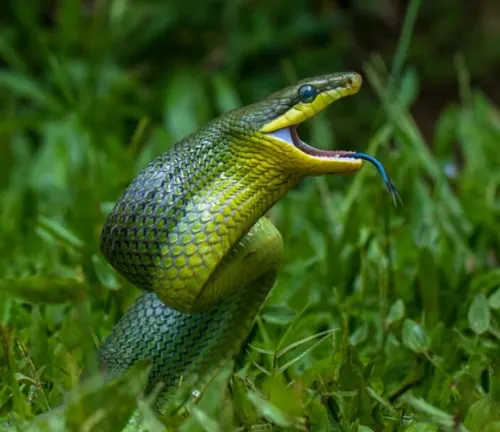
Ecological Importance
Within the intricate tapestry of Southeast Asian ecosystems, the Red-tailed Green Ratsnake plays a significant role. As a predator, it helps control populations of small mammals, birds, and lizards, contributing to the delicate balance of the food chain. Understanding the ecological importance of this species sheds light on its role in maintaining the health and equilibrium of its natural habitats.

Habitat
The Red-tailed Green Ratsnake’s preferred habitat mirrors its arboreal nature. It thrives in the canopies of forests and dense vegetation, showcasing a remarkable ability to navigate through trees with its slender and agile body. This specialized habitat adaptation underscores the snake’s dependence on specific environmental conditions for its survival.
Behaviour
As a diurnal species, the Red-tailed Green Ratsnake is active during the day, allowing for keen observation of its behaviors. Its calm and docile temperament, coupled with an affinity for climbing, makes it a fascinating subject for those intrigued by reptilian behavior. Understanding the snake’s behavior provides valuable insights into its natural instincts and interactions.
Art And Culture
The Red-tailed Green Rat snake has woven itself into the fabric of local art and culture in its native regions. Revered for its vibrant colours and unique characteristics, the snake often finds representation in traditional folklore, symbolising aspects of nature, balance, and sometimes transformation. Its cultural significance adds an extra layer of fascination to the snake’s mystique.
Survival
Despite its remarkable features, the Red-tailed Green Ratsnake faces threats to its survival. Habitat loss due to deforestation and the illegal pet trade pose significant challenges. Understanding the factors impacting its survival is crucial for implementing effective conservation measures to ensure the continued existence of this captivating species.

Conservation
Conservation efforts are paramount to safeguarding the Red-tailed Green Ratsnake and its natural habitats. Addressing issues such as habitat destruction and illegal trade requires collaborative initiatives involving local communities, conservation organizations, and policymakers. By raising awareness and implementing conservation strategies, we can contribute to preserving the biodiversity of Southeast Asian ecosystems.
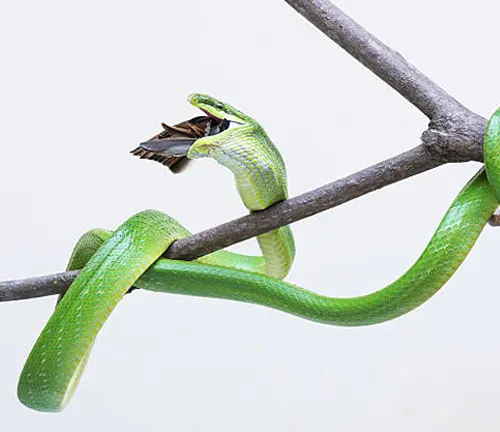
Common Food
In the intricate dance of predator and prey, the Red-tailed Green Ratsnake sustains itself on a diet primarily composed of small mammals, birds, and occasionally lizards. Its selective but essential feeding habits showcase the snake’s role as a predator, contributing to the delicate balance of the ecosystem it inhabits.
Benefits
Beyond its ecological role, the Red-tailed Green Rat snake holds potential benefits for human understanding and appreciation of reptiles. As an engaging subject for research and education, the snake offers insights into the complexities of biodiversity, fostering a deeper connection between humans and the natural world.
Different Species
Gonyosoma oxycephalum oxycephalum
This is the nominate subspecies and represents the typical Red-tailed Green Rat snake found in various regions of Southeast Asia. It exhibits the characteristic vibrant green coloration with a red tail.
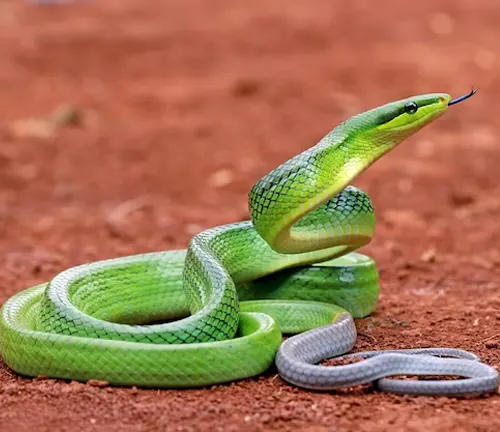
Conclusion
In conclusion, the Red-tailed Green Rat snake emerges as a captivating creature that transcends mere aesthetic appeal. Its ecological significance, cultural ties, and the challenges it faces underscore the importance of conservation efforts. As we delve into the intricate facets of this serpent’s existence, we gain not only a richer understanding of its role in nature but also a heightened appreciation for the diverse and interconnected web of life in Southeast Asia.
Frequently Asked Questions (FAQs)
1. What is a Red-tailed Green Rat snake?
The Red-tailed Green Rat snake, scientifically known as Gonyosoma oxycephalum, is a non-venomous snake native to Southeast Asia. It is recognised for its vibrant green coloration and distinctive red tail.
2. Are Red-tailed Green Rat snakes dangerous?
No, Red-tailed Green Rat snakes are non-venomous. They rely on constriction to subdue their prey rather than venom. However, like all snakes, they may bite if they feel threatened, so handling should be done with care.
3. What is the size of a Red-tailed Green Rat snake?
These snakes can reach lengths of up to six feet, with males generally being smaller than females.
4. What is their natural habitat?
Red-tailed Green Rat snakes are arboreal and inhabit forests and dense vegetation in Southeast Asia. They are skilled climbers, navigating through trees with agility.
5. Are they suitable as pets?
Yes, Red-tailed Green Rat snakes are popular as pets among reptile enthusiasts. They are known for their calm temperament, but proper care, including a suitable enclosure and diet, is essential.
6. What do they eat in captivity?
In captivity, they are typically fed a diet of rodents, birds, and occasionally lizards. It’s important to provide a varied and well-balanced diet to ensure their nutritional needs are met.
7. How do I create the right enclosure for a Red-tailed Green Rat snake?
Enclosures should mimic their natural habitat, including vertical space for climbing. A secure lid is necessary as these snakes are adept climbers. Proper temperature and humidity levels should also be maintained.
8. Are Red-tailed Green Rat snakes endangered?
While they are not currently classified as endangered, they do face threats such as habitat loss and illegal pet trade. Conservation efforts are essential to ensure their continued survival in the wild.
9. Can I handle a Red-tailed Green Rat snake?
With proper handling and respect for the snake’s behaviour, they can be safely handled. It’s crucial to approach them calmly and avoid sudden movements to prevent stress.
10. How do they contribute to ecosystems?
Red-tailed Green Ratsnakes play a role in controlling populations of small mammals, birds, and lizards, contributing to the balance of the ecosystems they inhabit.


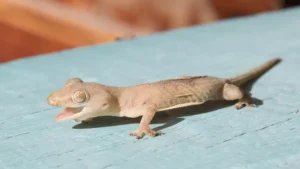

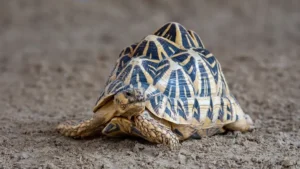
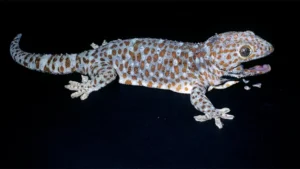
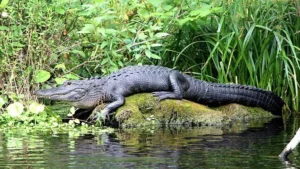

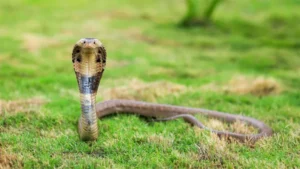
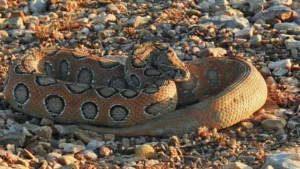
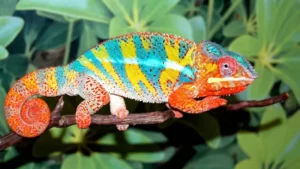
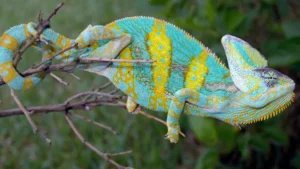
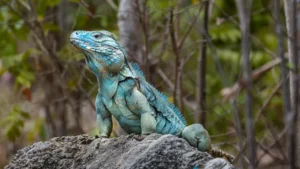

Leave your comment